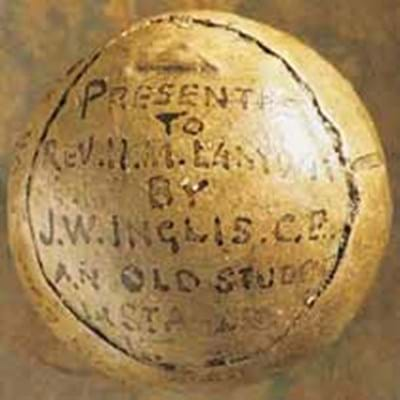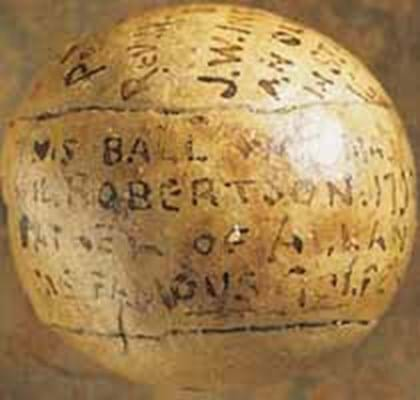Spain's Valderrama Golf Club, once such a force in the golfiana market but conspicuous by their absence in recent years, stepped up to the tee again on July 12 to compete for this rare feather ball offered by Lyon & Turnbull (17.5% buyer's premium) on behalf of an American collector.
Not only was it unusually large, it was inscribed in ink to the top Presented to Rev. H.M. Lamont by J.W. Inglis an old student in St Andrews, 18** and to the side This ball was made by Wil. Robertson, 1790, father of Allan, the famous golfer. William Robertson was in fact the uncle of the first great golf professional (who became the first to score below 80 on the Old Course, St Andrews) but the mistake was commonly made in the 19th century.
The ball was on the market for the first time since the early 1960s when it was purchased by the vendor from one of the Kerr family in St Andrews along with many early longnoses and a square toe club. Estimated at up to £20,000, it sold to the Valderrama, represented in the room by London dealer Titus Kendal, at £24,000.
The price is among the highest ever paid for a golf ball. It beats the £23,000 achieved by a D. Marshall feathery sold by Phillips in 2001, although it does not quite match the £26,000 paid for the gutta percha patent [Alexander] Henry's Rifled Ball, sold at Sotheby's in July 1998.
Of the four rounds of golf sales this year played by Bonhams, CSK, Sotheby's and Lyon and Turnbull (perhaps telling there was no sale for Bob Gowland's International Golf Auctions) this Edinburgh outing was comfortably the best. It was not immune from the problems of demand and supply the market now faces - "there will be a lot of material for sale over the next few years and we really need new buyers," commented specialist Rachel Doerr - but the quality was sufficient to provoke occasional moments of animated bidding.
Prompting competition to £3000 was a variant of R.L. Urquhart's adjustable head iron. Seemingly an early protype of this early 20th century patent with its adjusting button set at the front rather than at the rear of the hosel, it went way above the £500-700 usually expected for this club.
And it still never ceases to amaze just how much the image of a golfer can add to the value of an otherwise rather dull ceramic or bronze. Among a fine selection offered here by an American client was a pair of Bohemian irridescent cylindrical form glass vases, 13in (32cm) high and enamelled with scenes of lady golfers within floral sprays. They sold for £7500 (surely 20 times more than if the golf clubs had not been present) although apparently at a Christie's East sale in 1996 they had made considerably more.
Valderrama back in the swing with £24,000 ball
EXCEPTIONAL golfing collectables can still command exceptional prices.








